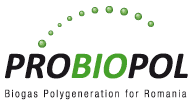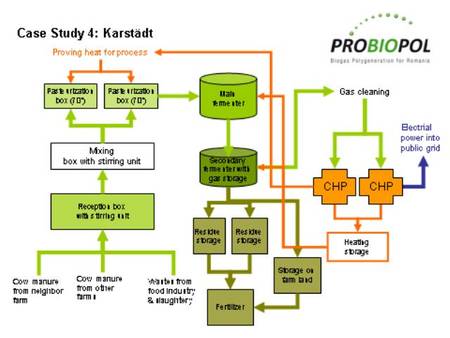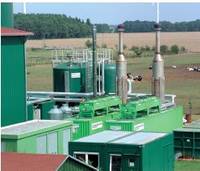The location of this biogas plant was chosen because of the availability of a large quantity of manure. Next to the plant is a big agriculture cattle farm with some 3,000 animals and the manure (round about. 50 000 t/a) get directly pumped in the plant. This saves money for transport and reception capacities are kept for co-substrates. Other farmer can also bring the manure of their cows and can receive the residues of the plant as fertilizer for their agricultural land. There are also food producing companies nearby, which can dispose their organic waste in the plant cost-effectively. A benefit for this kind of input choice is that the plant is thus not dependent on crops, harvest times and crop prices. The rural area where the plant has been installed is underprivileged and the option of developing agriculture into energy producing businesses is a possible solution for strengthening the region. The heat is used on site, mainly for the pasteurization processes. A special feature is the further use of the excess heat from the pasteurization process to cool the substrates from 70 to 40 °C before they are fed into the fermenter.
| Type of plant: |
Co-fermentation (cow manure, organic wastes) |
| Location: |
Karstädt, Germany |
| Operator: |
BioKraft Karstädt, Brandenburg |
| Constructor: |
Farmatic Biotech Energy AG, Nortorf |
| Operation start: |
2001 |
| Mode: |
2 stage |
| |
Wet fermentation |
| Temperature range: |
Mesophilic |
| Main fermenter: |
1 x 4,000 m3 |
| Secondary fermenter: |
1 x 1,500 m3 |
| Final storage tanks: |
2 x 5,000 m3 on site |
| |
2 x 6,000 m3 on farm |
| Feedstock: |
Cow manure (75 %) |
| |
Organic wastes (25 %) |
| Annual amount: |
67,000 tons |
| Use of gas: |
2 CHPs with 601 kW el ecah |
| |
GE Jenbacher |
| Electrical output: |
8,900,000 kWh el |
| |
supply for 2,124 households |
| Thermal output: |
6,000,000 kWh |
| |
equals 600,000 l heating oil |
| Use of thermal energy |
Pasteurization |
| Special feature: |
Special monitoring system |
| |
ith automation and visualisation (touch panels) |
| |
Manure is directly feed in through pipeline |
| Investment: |
4,000,000 € |
| Annual running costs: |
300,000 € depreciation |
| |
215,000 € staff |
| |
430,000 € maintenance |




